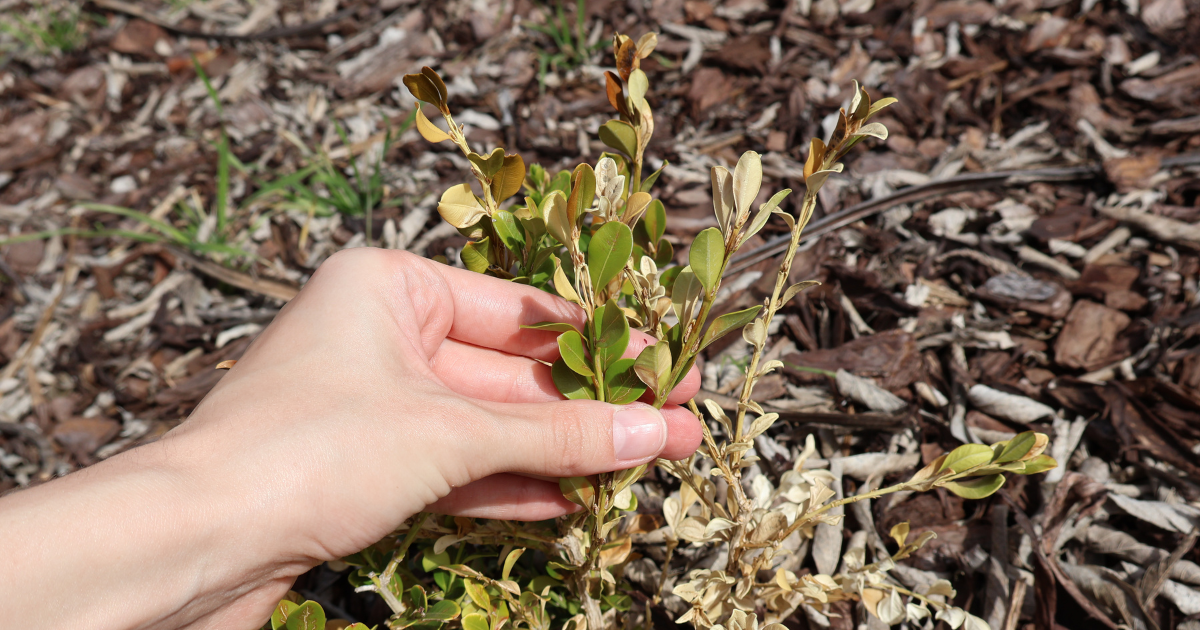Record-breaking cold has left boxwood plants feeling the burn, but recovery is in sight.
Gardeners across the South experienced record-breaking low temperatures and historic snowfall this past winter, while frigid arctic air swept across much of the country. The cold snap left many shrubs visibly damaged. Even the most proactive gardener could do little to prevent winter damage, which is most pronounced on broadleaf evergreens like boxwood plants. Dead and damaged plant tissues will not recover and need to be removed, but all is not lost. With corrective pruning and proper care, plants can recover from all but the most severe damage. Learn the best time and technique to trim winter-burned boxwood plants and set them on a path to recovery.
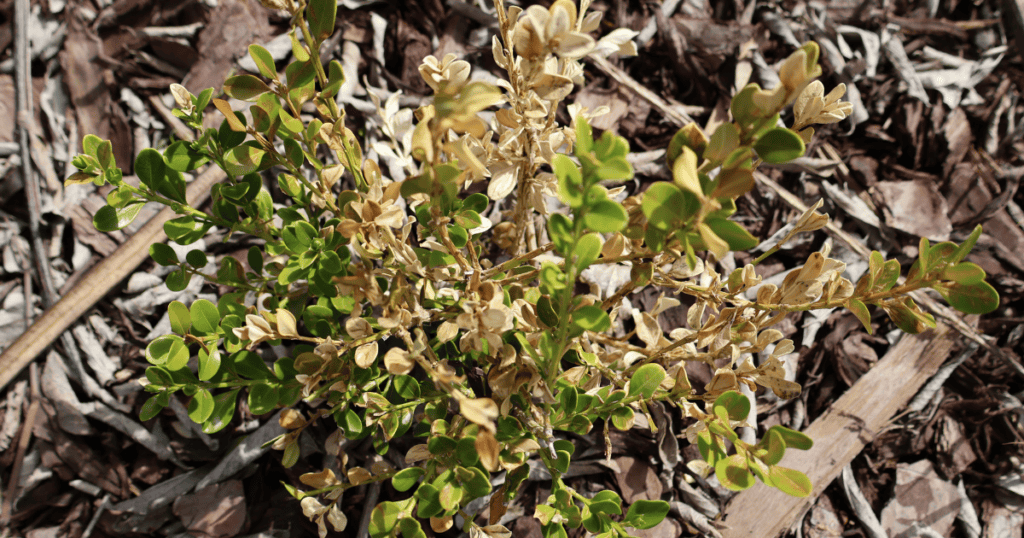
Understanding Boxwood Winter Damage
While gardeners can prevent most winter damage through proper boxwood placement and care, extreme weather conditions sometimes exceed our capacity to protect plants. Broadleaf evergreen plants like boxwood are susceptible to winter damage because they retain foliage through the winter months. Even the most cold hardy boxwood varieties can be damaged by extreme weather. The two common types of winter damage include bronzing or winter burn, and bark splitting.
Extreme cold, wide fluctuations in temperature, prolonged dry periods, and drying winds can all contribute to winter burn or bronzing. This type of damage causes discolored foliage, typically starting at the branch tips and progressing inward toward the center of the plant. Winter-burned foliage may appear reddish brown, gray-green, or straw colored, or may completely lose color. Bronzing may impact only a portion of the plant (usually the upper portions that face south and west), or the entire plant.
Extreme fluctuations in temperature can cause cracks to open along the bark of stems. This is due to water freezing and expanding in the stems. If you look closely, you can see cracks on the stem where the bark has split open. This type of winter injury causes entire branches to dieback, especially in the middle and apical parts of the crown. Tissue damaged by bark splitting or winter burn will not recover and needs to be removed.
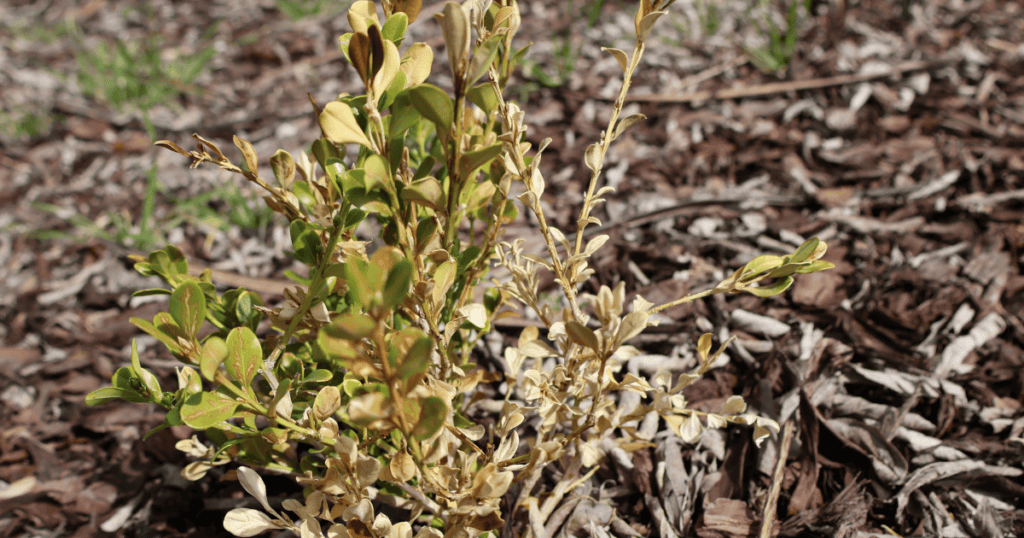
When to Trim Boxwoods
In general, the best time to prune boxwood plants is late winter to early spring before the new growth emerges. This is a good time to remove branches impacted by bark splitting. These limbs will show signs of dieback and when you look closely, you can see the cracks in the bark, often extending all the way to the base of the branch.
With bronzing, the extent of damage is not always immediately clear. When damage is mild, many evergreen shrubs will simply drop the damaged foliage in spring as new growth emerges, thus recovering from the damage naturally. These plants require little trimming aside from their regular annual care.
Plants more severely damaged by winter burn require heavier pruning. If you know branch tips are dead, trim them in late winter or early spring. To determine if a branch is alive, scratch the bark with your thumb nail and look at the tissue underneath. If it is still moist and green the stem is alive and there is a chance the branch will send out new leaves this spring. If you are not certain, delay trimming time until new growth begins to emerge in spring. This way, you can see which portions of the stem are still alive and which have died back.
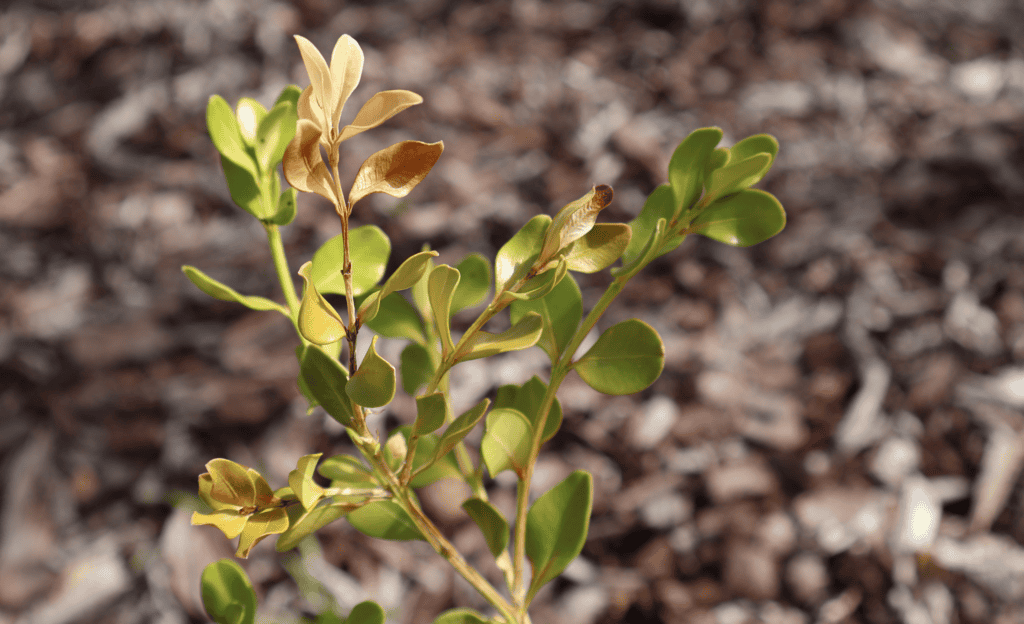
How to Trim Winter Damaged Boxwoods
Use pruning cuts rather than shearing to trim damaged boxwoods, making sure to disinfect hand pruners or loppers before you begin. Winter burn is often quite minor, affecting only the branch tips. Simply cut the dead shoot tips back to living tissue by making proper pruning cuts. These plants will recover quickly with new growth in spring.
In extreme cases, winter burn or bronzing can impact large portions of the plant. Cut damaged branches back to a healthy lateral branch or bud that faces outward to direct new growth away from the center of the plant. Plants with severe bronzing often appear misshapen after pruning because winter burn commonly impacts only one side of the plant. It may take a couple years of shaping to regain a strong form.
Bark splitting causes entire branches to die back. These need to be removed by cutting stems back past the point where the splitting begins. Again, this may leave misshapen plants that take several years to recover. Avoid the temptation to cut back all branches evenly. Those healthy stems will help provide the energy plants need to regrow damaged stems. After a year of regrowth, you can begin to even out the surviving stems and new growth.
In extreme cases, winter burn or bark splitting can affect the entire plant. In this case the whole shrub will display discoloration, dieback, and/or splitting bark. This can be disheartening, but many plants can be reclaimed through rejuvenation pruning. Wait to prune until all chances of frost have passed in spring, then cut all branches back to a height of twelve to eighteen inches above ground. Such severe pruning is not always successful. Be prepared to completely remove the plant if it does not recover.
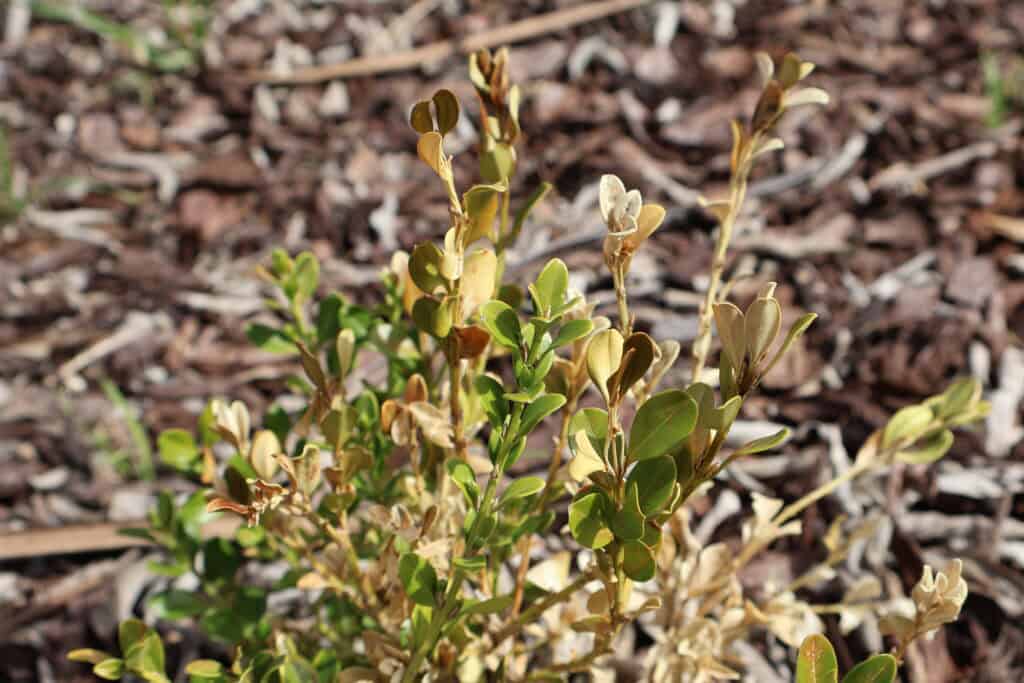
TLC for Winter Damaged Boxwoods
Continue to care for damaged plants as you would any other boxwood. Resist the urge to pamper plants with extra fertilizer, which can cause unintended harm. Apply slow-release fertilizer in early spring according to label rates. Broadcast the fertilizer throughout the root area, extending beyond the plant crown, and avoid direct contact with foliage, stems, or roots. Water the fertilizer into the soil after application, then resume your regular irrigation schedule.
Patience is a virtue when it comes to boxwood recovery. Some varieties grow slowly and need time to fully recover. Others will cover damage quickly with new growth. Boxwoods are resilient plants. With time and proper care, they will reclaim their prominent stature.

